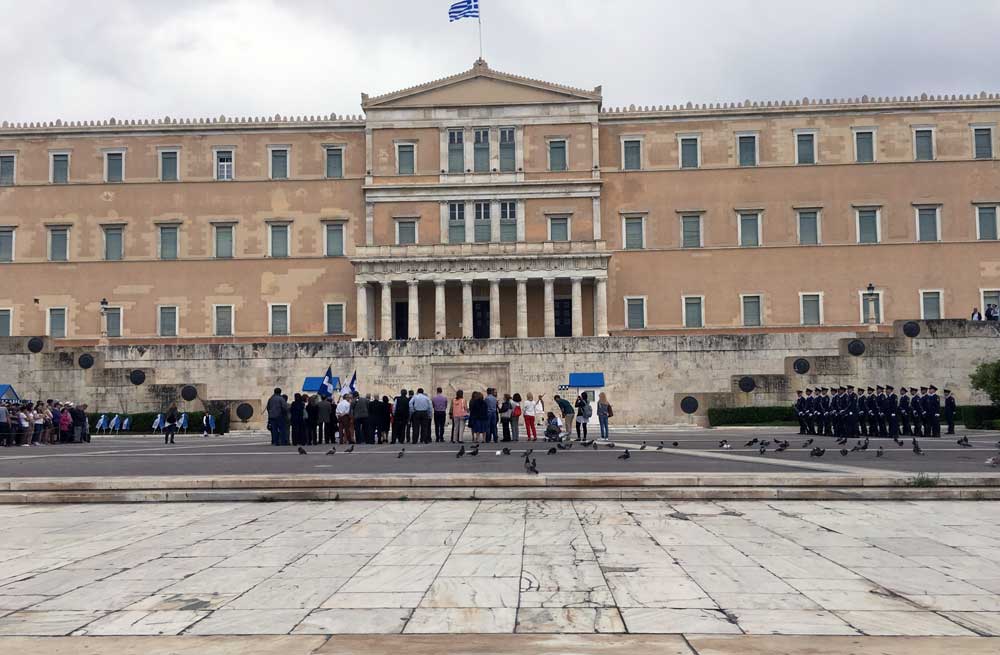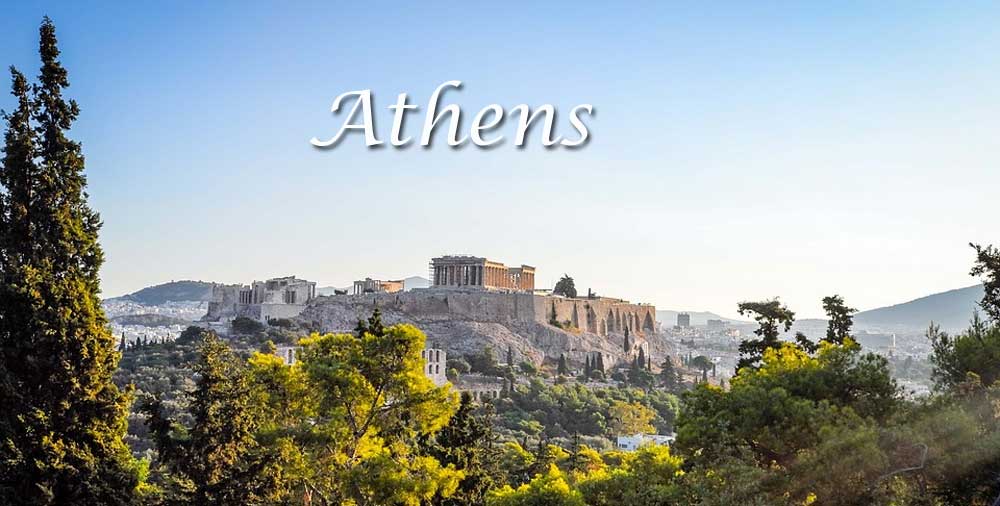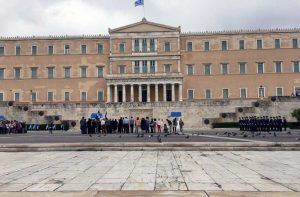The Royal Palace of Greece
The Royal Palace of Greece, is a neoclassical building in Athens, Greece, built between 1836 and 1843 as the primary residence of the royal family Greece, and seat of Parliament since 1929.
In 1836, King Otto I commissioned the Bavarian architect Friedrich von Gärtner, recommended by his father Ludwig I of Bavaria, to build a palace to house not only the royal family, but also the ministerial cabinet. At the same time, the architect organizes the plans for the future National Garden with Queen Amélie which adjoins the palace.
The building was the official royal residence until 1910, when George I chose to settle in the palace of Irodou Attikoú, not far from there, which today houses the Presidency of the Hellenic Republic. On the west side of the building, the site was transformed in the interwar period into a monument to the unknown soldier.
Nowadays, the palace houses the Greek Parliament, the office of the President of the Assembly, his vice-presidents, the Cabinet meeting room, the Parliament’s television channel as well as the administrative services. It is accessible by public transport via the bus and metro network (Syntagma station).

In particular, the construction area proposed by Gertner was the continuation of the intersection of Stadiou streets, (a ring road at the time), and Ermou streets on a small and smooth hill which, in addition to the most healthy climate it presented, also dominated Athens at its easternmost end. Thus, Gertner was commissioned to draw up the plans for the building, a task that was carried out in a short time during his short stay in Athens (from December 1835 to March 1836), and was a feat that only the great concentration of of his abilities he could accomplish.
The foundation of the building took place on January 25 AM / February 6 PM. of 1836 in the presence of Louis I and the ambassadors of the Great Powers. In March, Gertner returned to Munich, leaving the direction of the construction of the building to the Bavarian lieutenants Schlotter and Hoss. Gertner, in his office in Munich, completed the work by studying all the details reaching the number of 247 plans that only concerned the building of the palaces of Athens. Today these drawings are included in the large collection of Moniger in Munich, while a very small number of them were given to the museum of the Parliament which prove the diligence of every detail.
The main materials used in the construction of the building were stone, marble and wood, the main stone coming mainly from Ymittos, Lykavittos and from the “Pinakota” area, an area of Athens near the Strefi hill, while the marble came mainly from Penteli, a few from Hymettos, also a few from Tinos, Paros and Naxos and a few from Carrara and Genoa in Italy.
Finally, the wood came from Evia. The attendance of many residents and especially islanders who asked to work unprofitably in the construction of the palaces such as Tinios, Sifnai, Parians, Naxiotes etc. was touching.
Finally, as soon as the construction of the walls was completed in November 1840, Gertner returned to Athens to supervise the continuation of the construction as well as the painting decoration of the interior spaces, bringing with him the famous painters of historical scenes of the time, Johann Schraudolf, Ulrich Halbreiter and Joseph Kranzburger who undertook the large frescoes with scenes from Greek mythology, and the Greek revolution of 1821, especially in the trophy room.
After a three-month stay, Gertner returned to Munich again, this time leaving the engineer Riedel in his place, who completed the building successfully in 1847.


